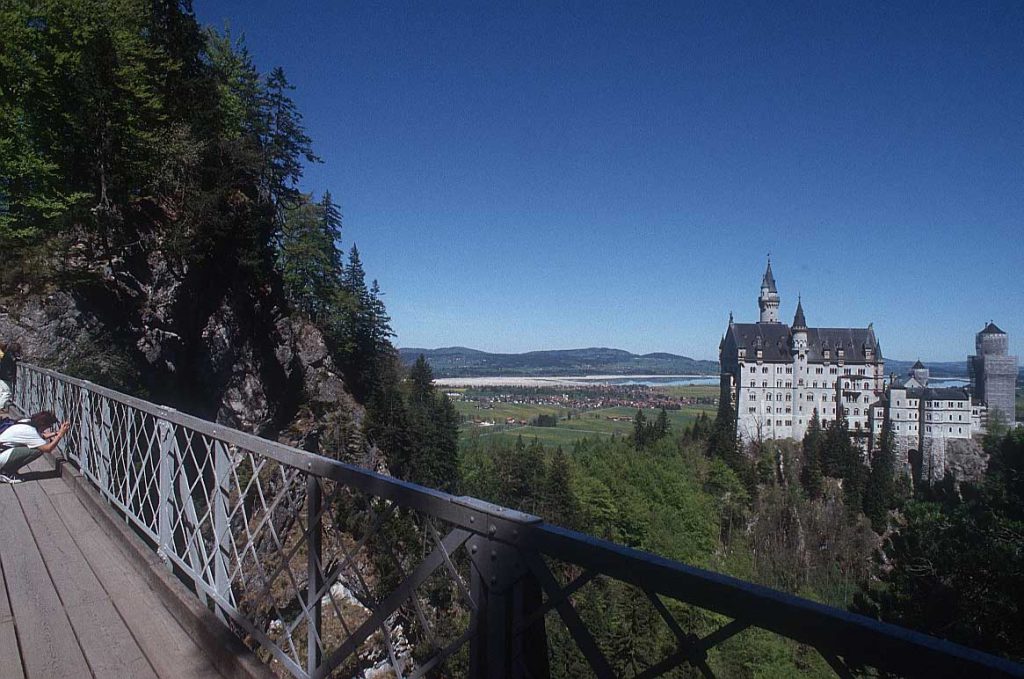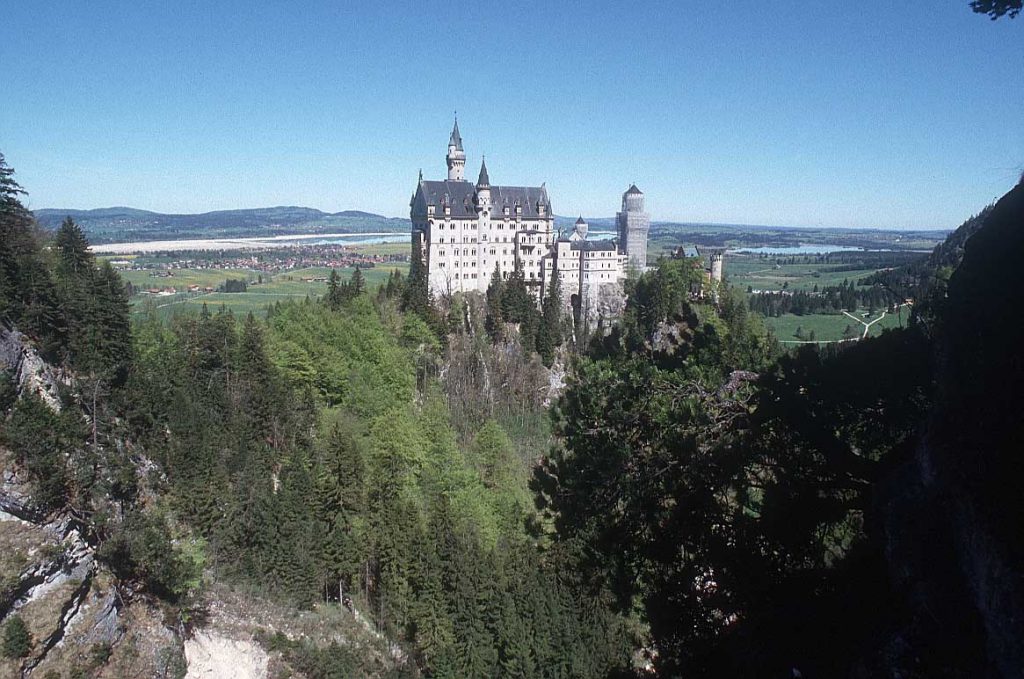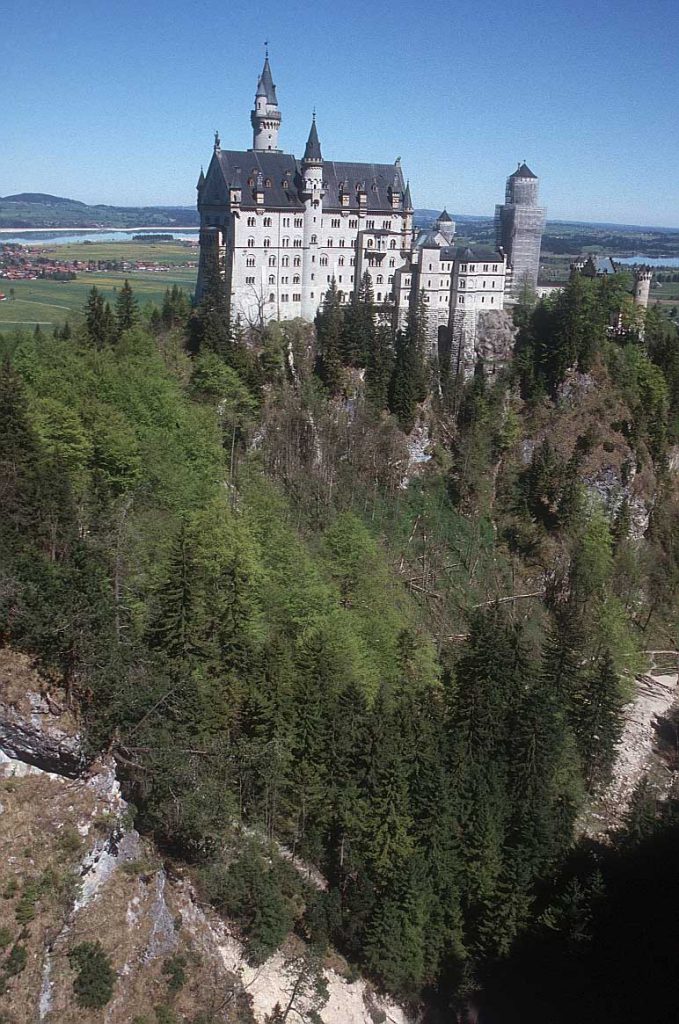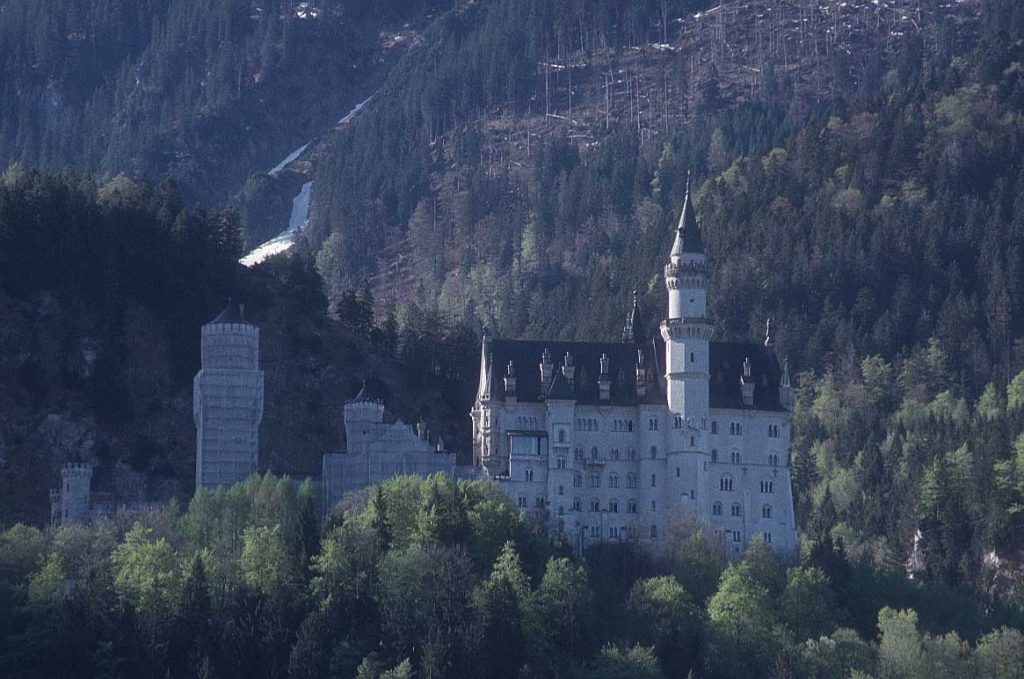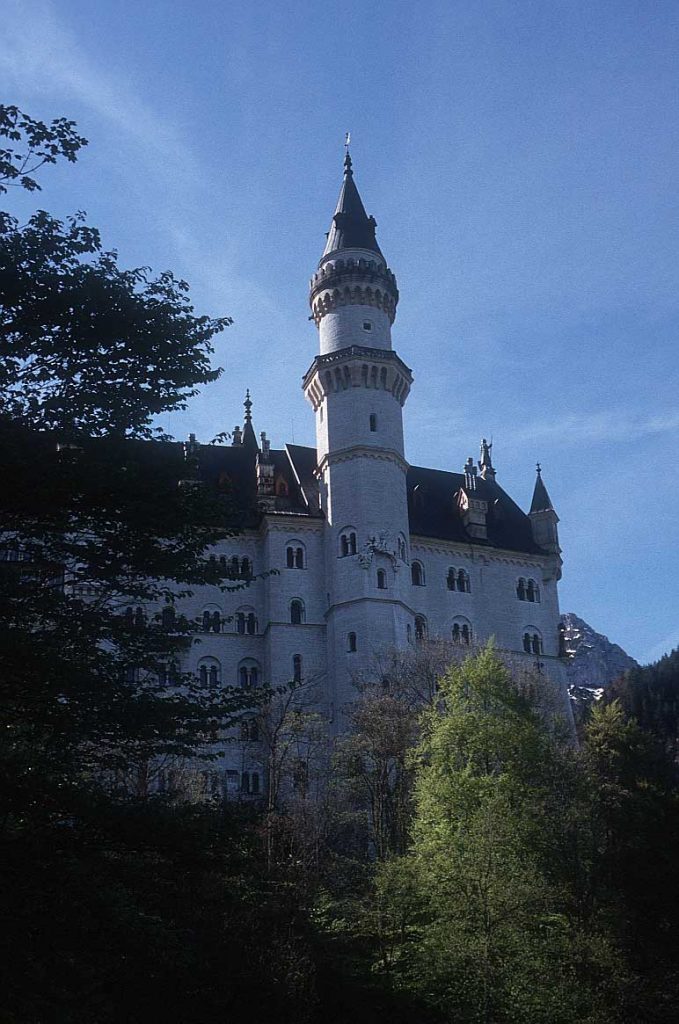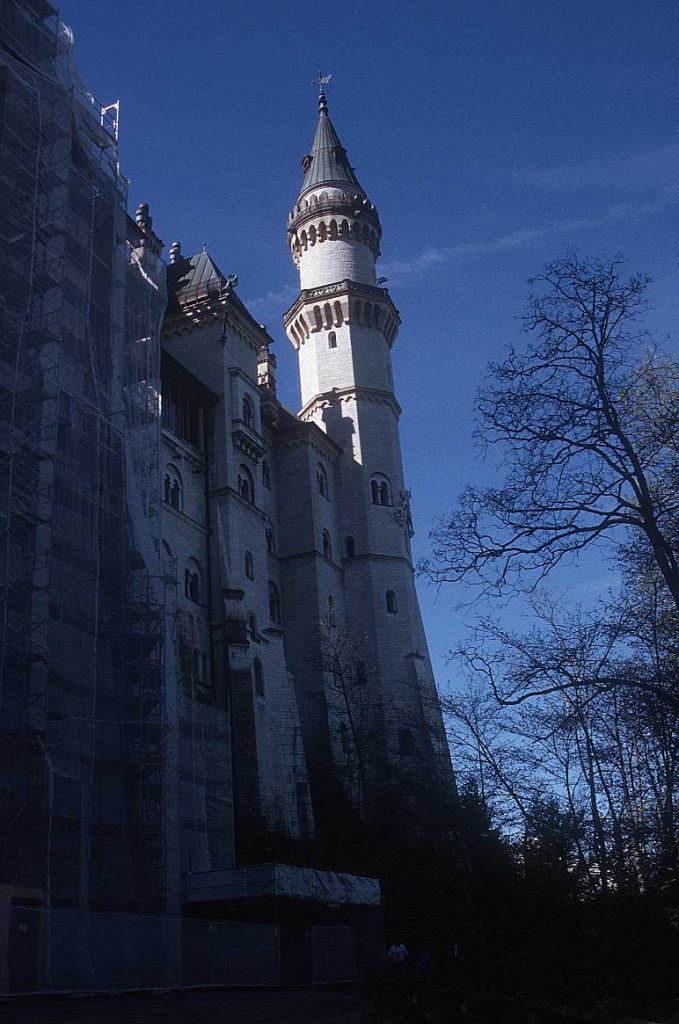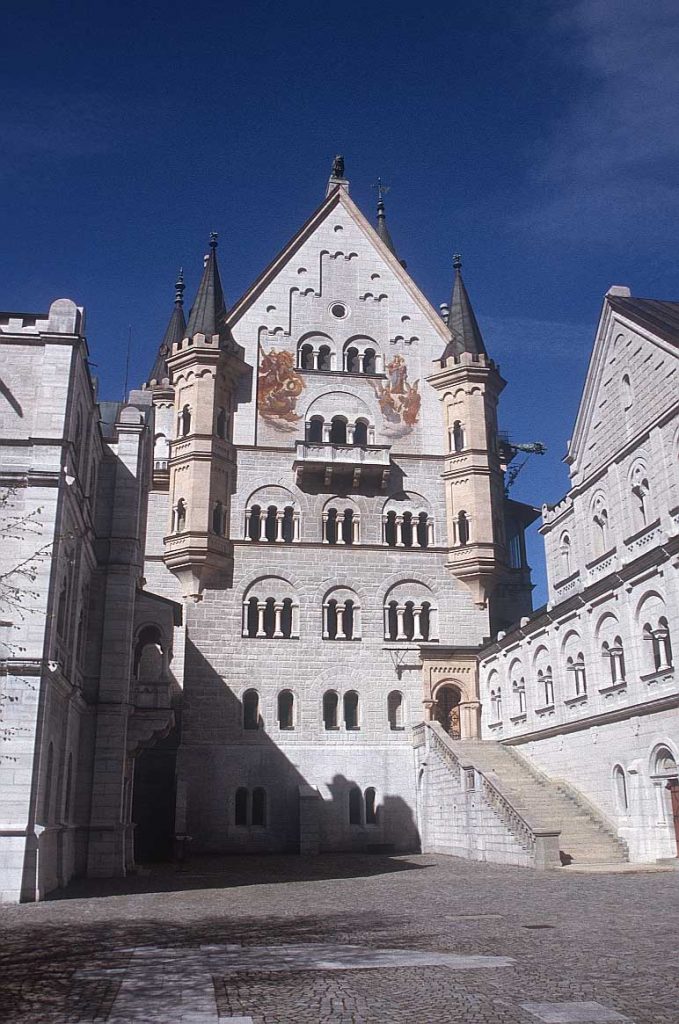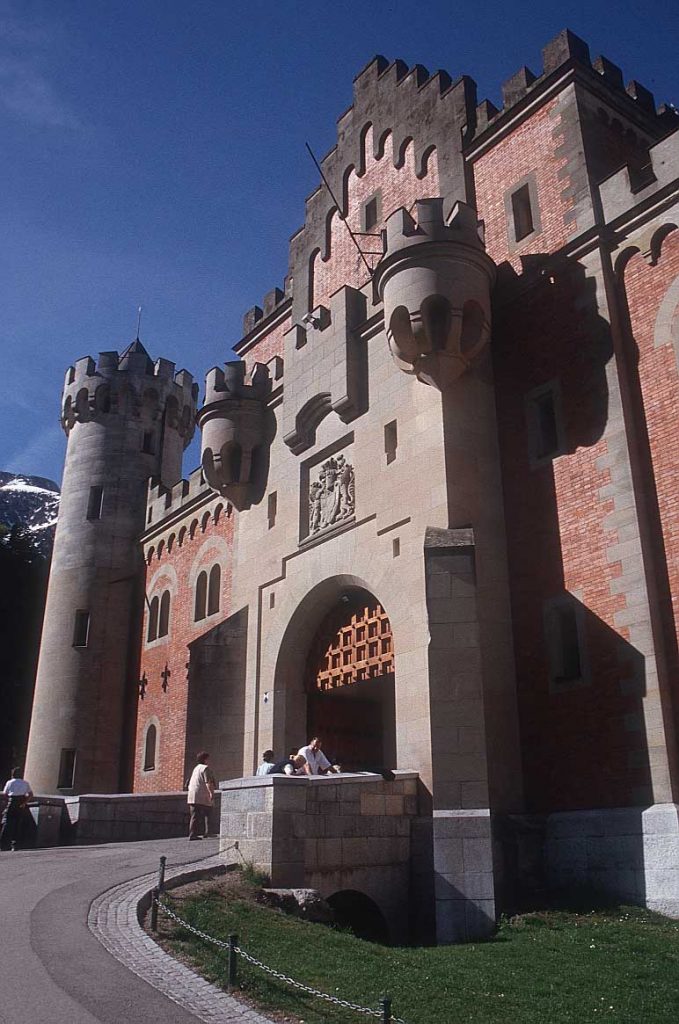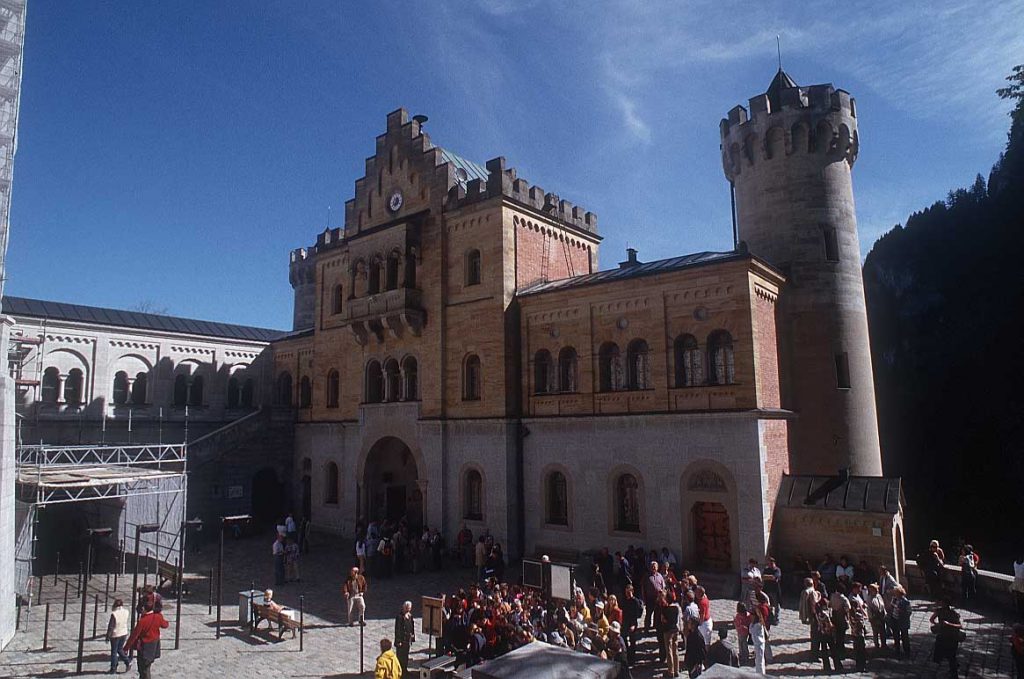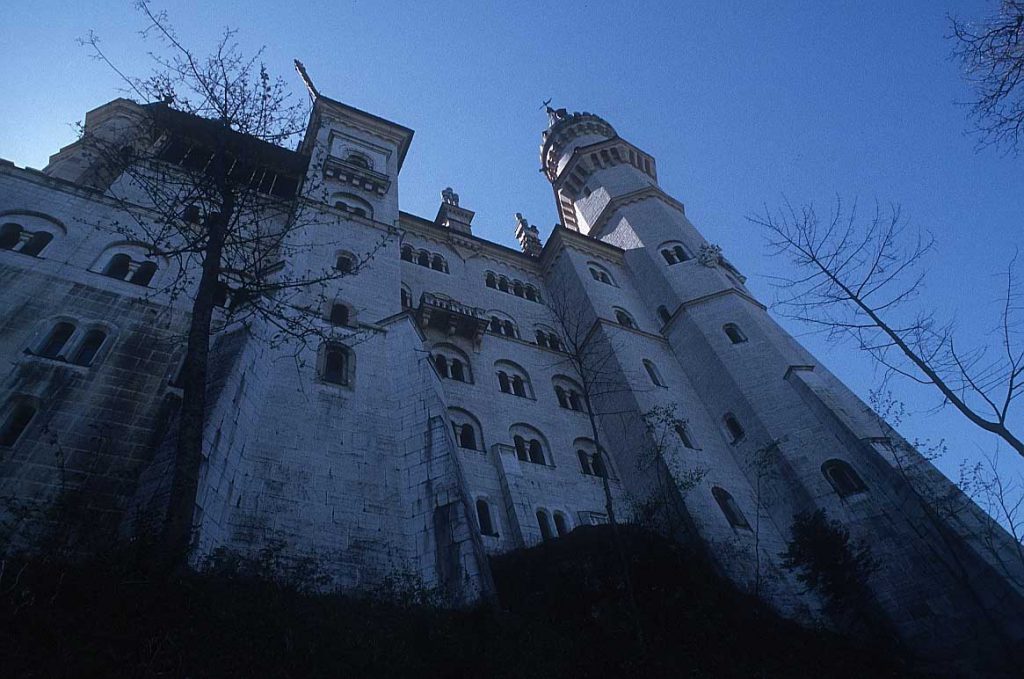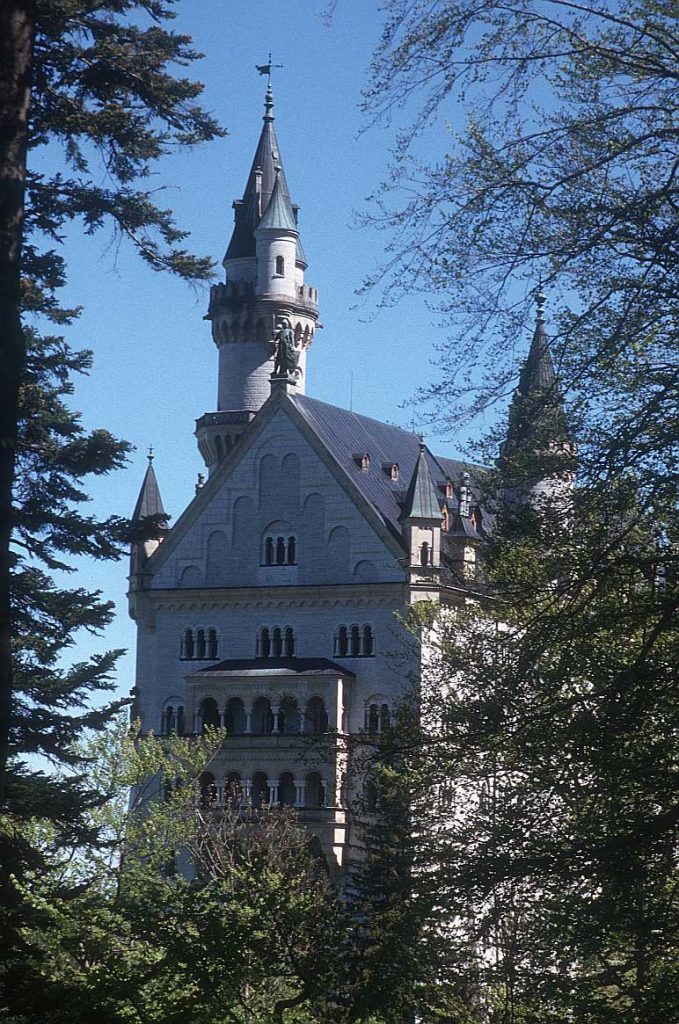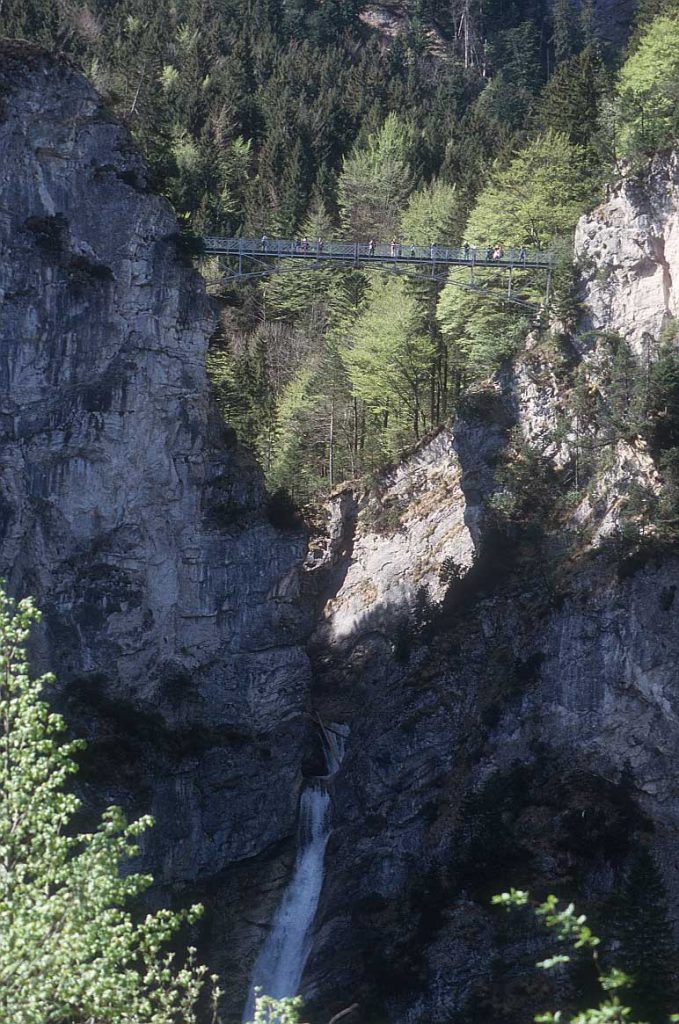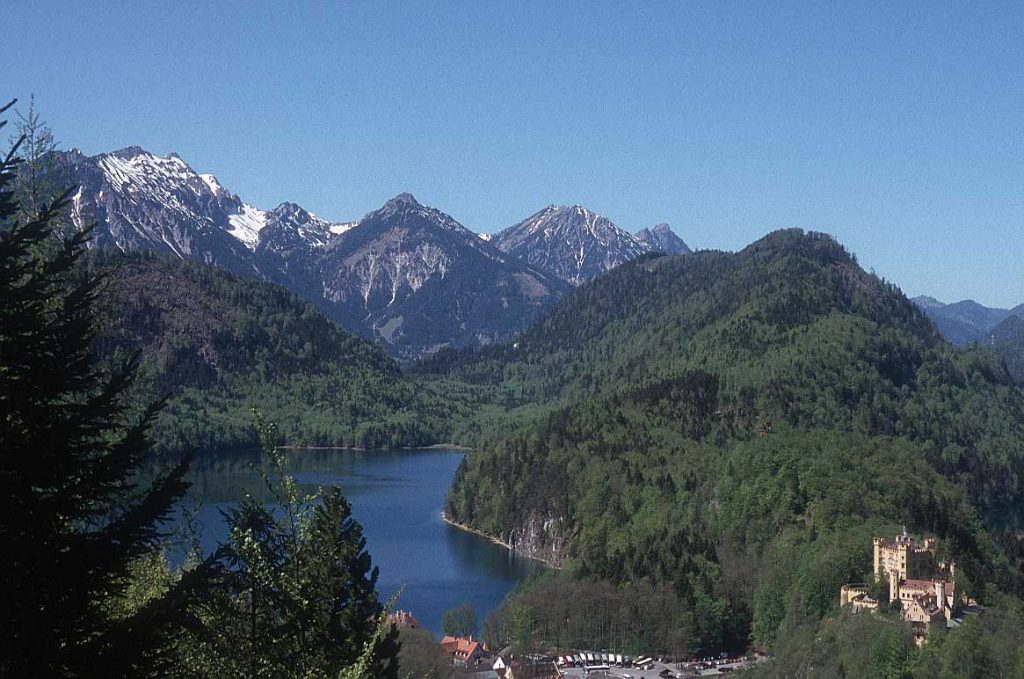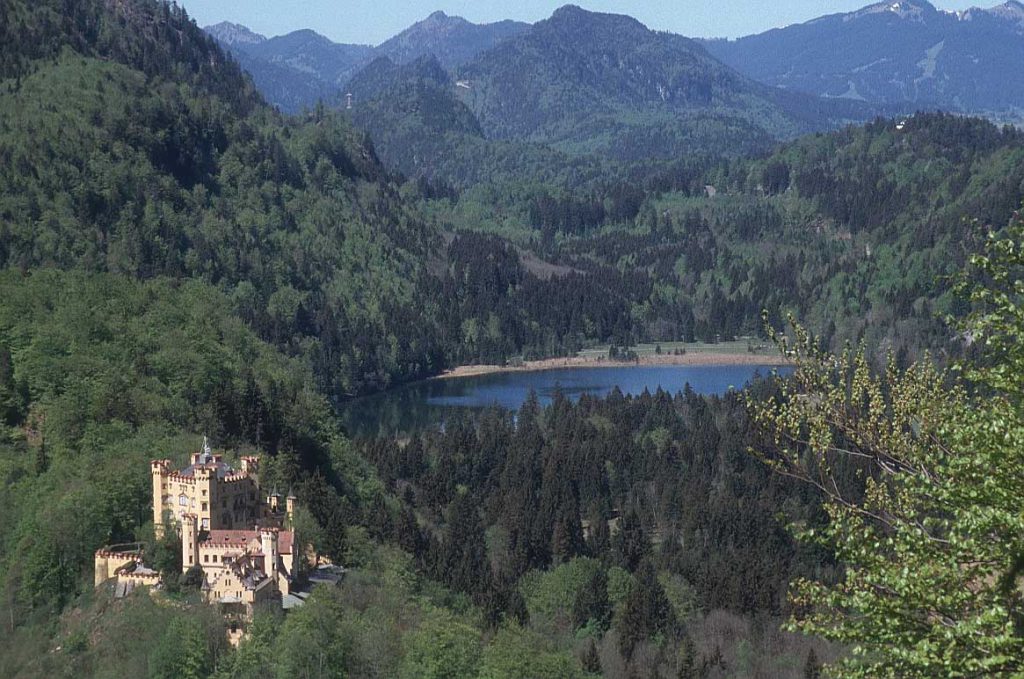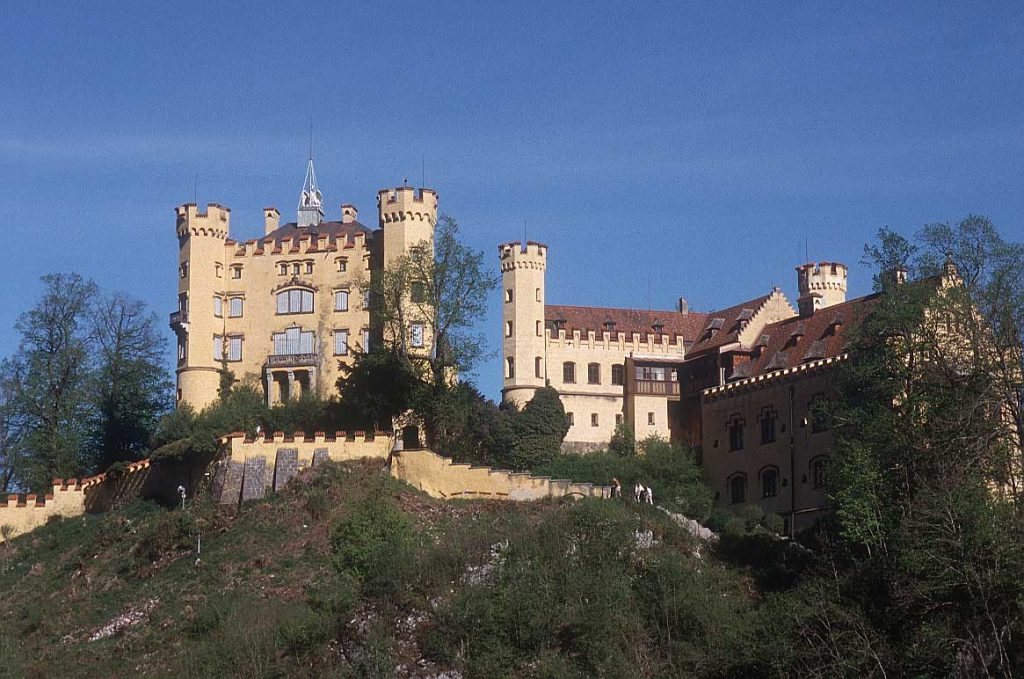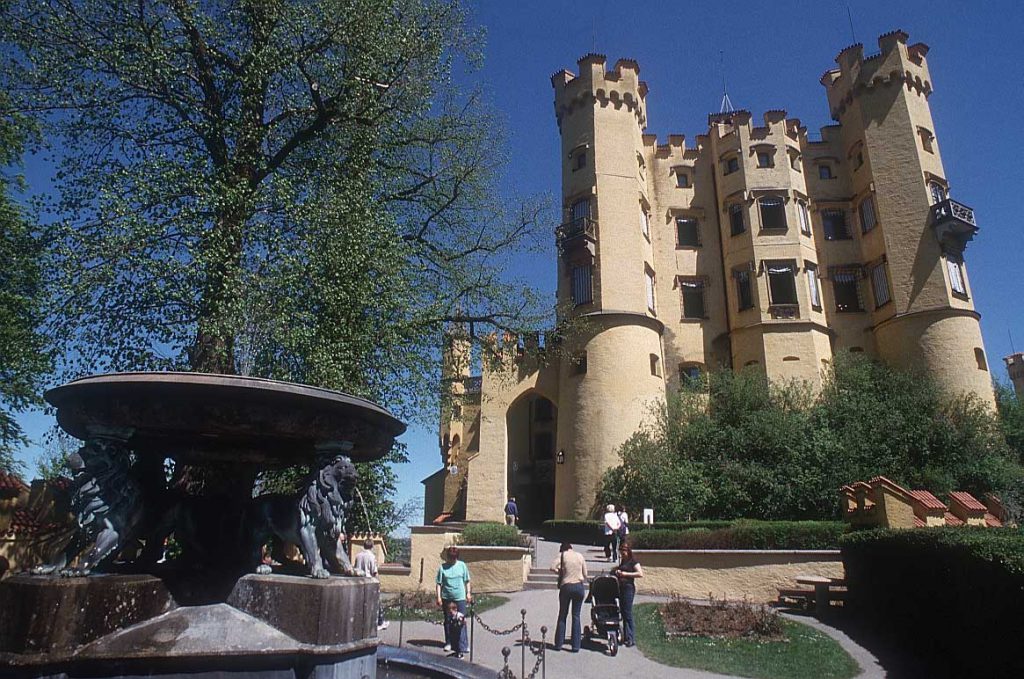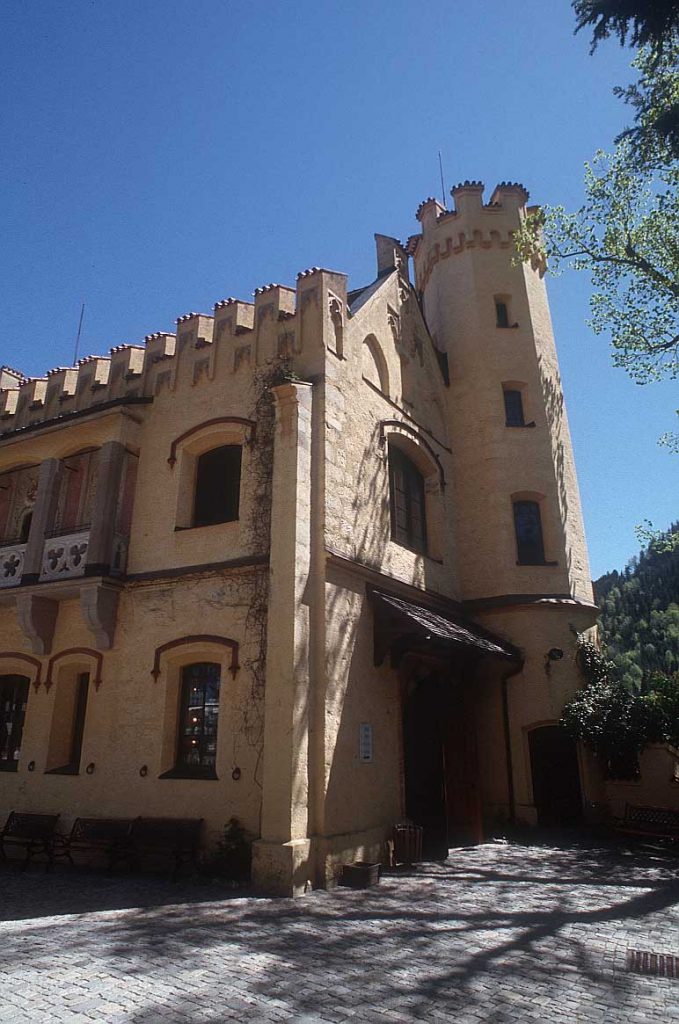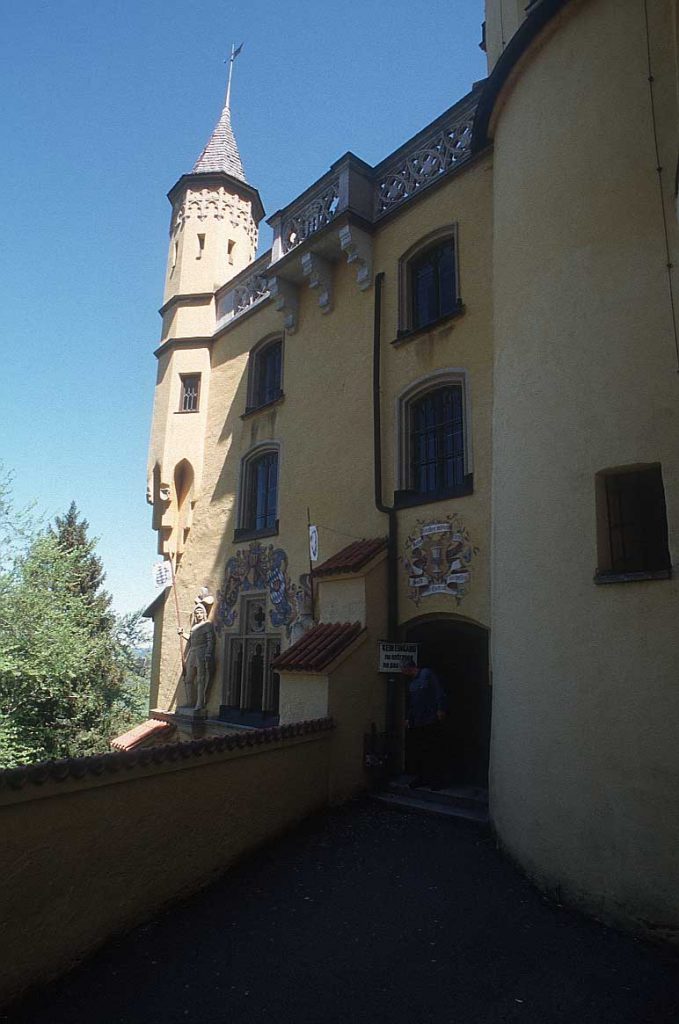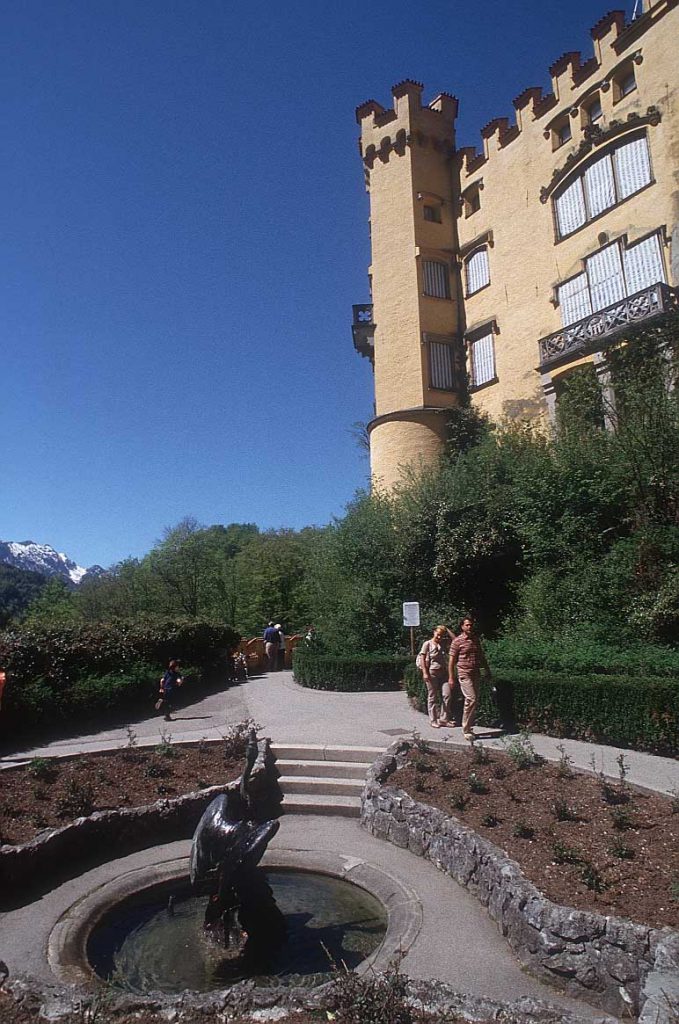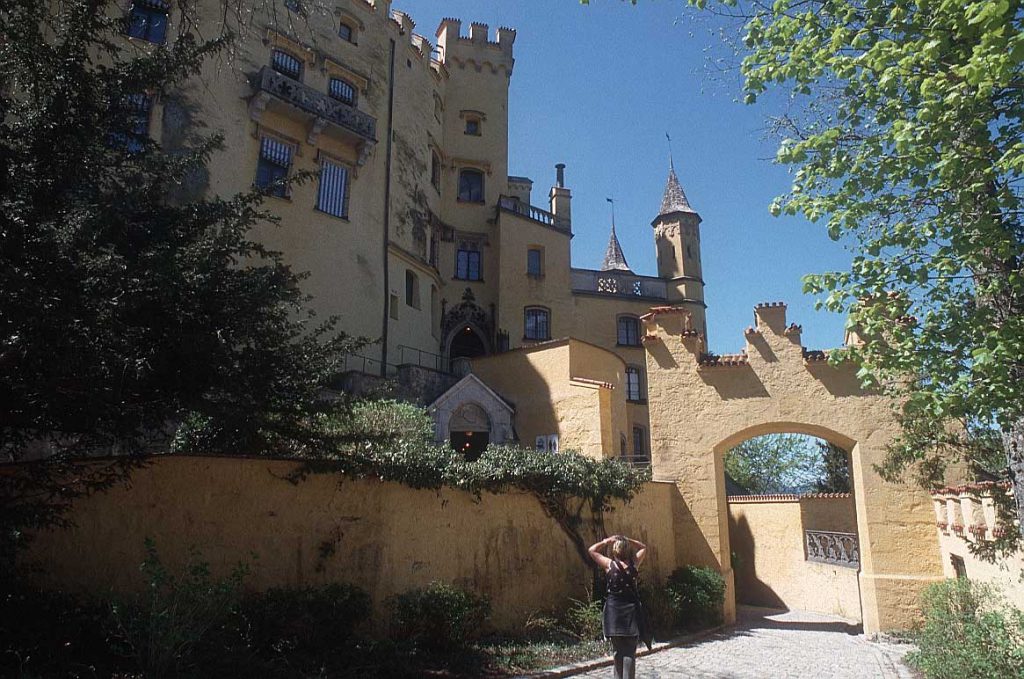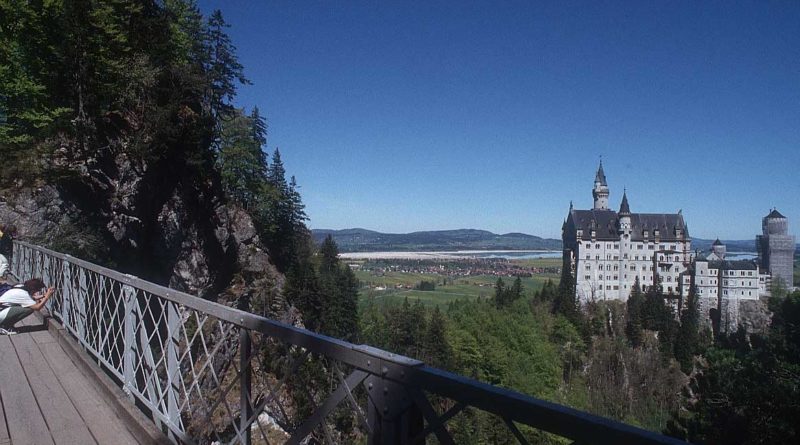Castles Neuschwanstein and Hohenschwangau
King of the Castles: the fantasy builder of Neuschwanstein
In my languages’ classroom at school in England, the teacher had put up a tourist poster of an amazing fantasy castle which I later found out was called ‘Neuschwanstein’. As an adult I was able to visit this enchanting 19th century dream palace of King Ludwig II of Bavaria, one of many built by this mysterious and castle-obsessed monarch.
Ludwig II was brought up in Hohenschwangau Castle, a mock-castle built by his father, King Maximilian II. When Ludwig was only 18 his father died suddenly and Ludwig had to ascend the throne unprepared. Already interested in German mythology and obsessed by the opera of Wagner, one of the new king’s first actions was to summon the composer to his court. Their music festivals and concerts seemed to inspire the king to lose himself in a fantasy world in which he dressed as characters from opera and designed Disney-esque castles that would serve as sets for Wagner’s performances.
King Ludwig began Neuschwanstein (meaning ‘the new swan on the rock’) in 1868. It was to be a Romanesque fairy tale fortress with wondrous towers, not far from Hohenschwangau. Perched on a rock, the castle would be seen against the sky. Its walls were to be decorated with scenes from the legends behind Wagner’s operas. Ludwig first occupied it in 1884, but the castle remained incomplete at his death in 1886, and parts were never finished.
Entrance tickets for Neuschwanstein (open daily except Christmas and New Year) must be bought at the ticket office in Hohenschwangau village below the castle, where you also park before walking up the path to the entrance. The apartments can only be visited on a guided tour lasting 30 minutes. There are reduced ticket prices if you want to see Ludwig’s childhood home of Hohenschwangau as well.
For a rural retreat, in 1886 King Ludwig built the ten-roomed private palace of Linderhof (open daily) in the Graswang Valley near Ettal. Here, he commissioned gardens around a large pool with a 25 metre high fountain in the romantic style. There are terraces and cascades, with a music pavilion at the top, and a grotto. Further from the palace a landscaped park leads to open meadows with views of the mountains. (The park is closed from October to March.)
Versailles was the inspiration for Herrenchiemsee, which in contrast to Linderhof is big, magnificent and unfinished. It was begun in 1878 on an island in the Chiemsee, the largest lake in Bavaria. The huge state rooms and the impressive State Staircase, along with the Great Hall of Mirrors, are highlights of a guided tour lasting 30-45 minutes. Allow time too for the Ludwig II Museum and the gardens and park. From April to October you can ride in a carriage from the boat pier to the palace, or if you are more energetic you can walk the 7 km trail round the island.
The ‘Konigsschlösser’ combined ticket allows you to visit Neuschwanstein, Linderhof and Herrenchiemsee once in a six month period for 24 euros.
Today tourists visiting King Ludwig’s castles bring a huge amount of money to Bavaria – an irony when you consider that his building obsession seems to have bankrupted the king and caused him to be deposed. Where outsiders were once barred by the reclusive monarch, 50 million people are estimated to have visited since his death!
History Neuschwanstein Castle

Tucked away amidst the picturesque landscape of Bavaria, Germany, stands a fairytale edifice that seems plucked straight from the pages of a storybook. Neuschwanstein Castle, with its soaring spires, ornate facades, and idyllic setting, has captured the imagination of millions worldwide, earning its place as one of the most iconic and beloved castles in the world. In this article, we embark on a journey to uncover the enchantment and history that shroud this architectural masterpiece.
A Dreamer’s Vision
Commissioned by King Ludwig II of Bavaria in the 19th century, Neuschwanstein Castle was not merely a residence but a manifestation of the king’s romantic ideals and artistic fervor. Ludwig, often dubbed the “Fairytale King,” sought to create a retreat that embodied the medieval chivalry and romance he adored from Wagnerian operas and the tales of the Middle Ages. Designed by theatrical set designer Christian Jank, the castle was intended as a homage to the operatic works of Richard Wagner, whom Ludwig passionately supported.
Architectural Splendor
Neuschwanstein’s architecture is a harmonious blend of romantic and neo-Gothic styles, characterized by its soaring towers, intricate carvings, and fantastical motifs. Perched dramatically on a rugged hilltop overlooking the verdant valleys below, the castle exudes an air of otherworldly charm, drawing visitors into its spell from afar.
The interior of Neuschwanstein is no less breathtaking, adorned with opulent chambers inspired by the legends and sagas that fascinated Ludwig. Visitors can wander through lavishly decorated rooms such as the Throne Room, adorned with elaborate frescoes depicting scenes from Wagner’s operas, and the Singer’s Hall, where guests can marvel at intricate woodcarvings and delicate stained glass windows.
A Tale of Intrigue
Despite its fairy tale appearance, the story of Neuschwanstein is tinged with tragedy and intrigue. King Ludwig’s ambitious vision and extravagant spending led to mounting debts and political unrest, culminating in his deposition in 1886. Tragically, the enigmatic king never saw his beloved castle completed, as he died under mysterious circumstances shortly after his removal from power. Neuschwanstein, once intended as a refuge from reality, became a symbol of Ludwig’s ill-fated reign and untimely demise.
Legacy and Influence
In the years following Ludwig’s death, Neuschwanstein Castle captured the imagination of artists, writers, and filmmakers, inspiring countless adaptations and interpretations in popular culture. Its iconic silhouette has graced the silver screen in films such as “Chitty Chitty Bang Bang” and served as the inspiration for the Sleeping Beauty Castle in Disney’s theme parks. Neuschwanstein’s enduring allure continues to draw millions of visitors each year, cementing its status as a symbol of romance, fantasy, and the enduring power of imagination.
Visiting Neuschwanstein
For those seeking to experience the magic of Neuschwanstein firsthand, a visit to this fairy tale castle is a must. Located near the town of Füssen in southern Germany, the castle is easily accessible by car, train, or guided tour. Visitors can explore the castle’s interior on guided tours, marveling at its ornate furnishings, majestic halls, and panoramic views of the surrounding countryside.
Additionally, the surrounding area offers a wealth of attractions for history buffs, nature enthusiasts, and culture lovers alike. From the historic town of Füssen with its charming cobblestone streets and medieval architecture to the breathtaking vistas of the Bavarian Alps, there’s something for everyone to enjoy in this enchanted corner of Germany.
Neuschwanstein Castle stands as a testament to the power of imagination and the enduring allure of fairy tales. From its humble beginnings as a dream of a romantic king to its status as a global icon of architectural splendor, the castle continues to captivate and inspire all who encounter it. Whether viewed from afar against the backdrop of the Bavarian Alps or explored up close within its hallowed halls, Neuschwanstein Castle remains a beacon of enchantment, inviting visitors to step into a world of fantasy and wonder.
